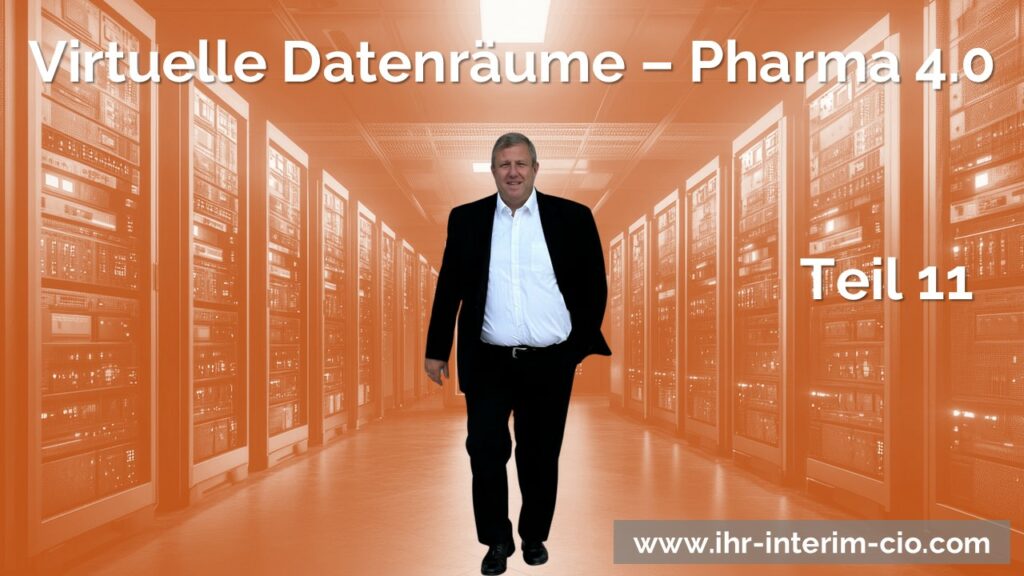
Interim CIO: Dr. Claus Michael Sattler
Digital twins in pharmaceutical production
Opportunities and challenges for CDMOs

In the rapidly developing pharmaceutical industry, Contract Development and Manufacturing Organizations (CDMOs) are faced with the challenge of continuously optimizing their processes while ensuring the highest quality standards. One promising technology that is becoming increasingly important is digital twins in pharmaceutical production. These virtual representations of physical objects or processes open up new opportunities for CDMOs to increase efficiency, quality assurance and innovation.
What are digital twins?
Digital twins are virtual models that depict real objects, processes or entire systems in real time. In pharmaceutical production, they can be used to simulate production facilities, manufacturing processes or even individual drugs. These digital representations make it possible to optimize processes, identify problems at an early stage and make decisions based on comprehensive data [source: 1].
Opportunities for CDMOs
The integration of digital twins in pharmaceutical production offers CDMOs numerous advantages:
Improved process optimization
Digital twins enable detailed analysis and optimization of production processes. CDMOs can simulate different scenarios and predict the effects of changes without affecting the actual production process. This leads to increased efficiency and cost reduction [source: 2].
Increased quality control
By continuously monitoring and analyzing production data, potential quality problems can be identified and rectified at an early stage. This contributes to the improvement of product quality and compliance with strict regulatory requirements [source: 3].
Accelerated product development
Digital twins can significantly accelerate the drug development process. By simulating clinical trials, potential active ingredients can be identified and screened more quickly, saving time and resources [source: 3].
Personalized medicine
The technology enables the development of personalized medicines by integrating individual patient characteristics into the digital twin. This opens up new possibilities for customized therapies [source: 3].
Improved collaboration
Digital twins facilitate collaboration between CDMOs and their customers. The digital twin of production can be accessed at any time without having to go through an introduction procedure and without affecting ongoing production [source: 2].
Challenges for CDMOs
Despite the promising possibilities, CDMOs face a number of challenges when implementing digital twins in pharmaceutical production:
Complexity of the systems
CDMOs have to integrate a variety of systems that are often used by different customers and for different products. This heterogeneity makes the implementation of digital twins particularly complex [source: 7].
Data availability and data quality
The creation of precise digital twins requires large amounts of high-quality data. However, the availability of such data is not always guaranteed, especially for rare diseases or specific patient groups [source: 3].
Security and data protection
Managing sensitive data and ensuring data security is a major challenge. CDMOs must implement robust security measures to ensure the integrity and confidentiality of data [source: 4].
Regulatory requirements
The strict regulation of the pharmaceutical industry requires that all digital solutions comply with the applicable regulations. CDMOs must ensure that their digital twins meet the regulatory requirements [source: 2].
Investments and resources
Implementing digital twins requires significant investment in technology and skilled labor. CDMOs must weigh up whether the long-term benefits justify the initial costs [source: 5].
Implementation strategies for CDMOs
To take advantage of digital twins in pharma production and overcome the challenges, CDMOs can pursue the following strategies:
- Step-by-step implementation: Start with a pilot project in a limited area and expand the application step by step.
- Standardization of processes: Harmonize processes and data formats to facilitate the integration of different systems.
- Invest in data management systems: Implement robust systems for data collection, data storage and data analysis.
- Training and further education: Invest in training your employees to develop the necessary skills for dealing with digital twins.
- Collaboration with technology providers: Work with specialized providers to develop customized solutions for your specific requirements.
Future prospects
The future of digital twins in pharmaceutical production promises further exciting developments. With the increasing integration of artificial intelligence and machine learning, digital twins will become even more precise and powerful. They will play an important role in optimizing processes, improving product quality and developing personalized medicines [source: 5].
Conclusion
Digital twins in pharmaceutical production offer CDMOs enormous opportunities for process optimization, quality assurance and innovation. Despite the challenges of implementation, the long-term benefits outweigh the risks. CDMOs that successfully implement this technology will be able to increase efficiency, improve product quality and better respond to customer needs.
The integration of digital twins requires not only technological investments, but also a rethink of the entire organization. CDMOs that successfully master this change will be able to position themselves as leading players in the pharmaceutical industry of the future.
As an experienced interim CIO, I, Dr. Claus Michael Sattler, specialize in supporting companies with the implementation of innovative technologies such as digital twins in pharmaceutical production. With my expertise, I can help your CDMO take full advantage of this technology and overcome the challenges associated with it. Contact me today at www.ihr-interim-cio.com to find out how we can work together to equip your company for the digital future of pharma manufacturing.
Sources
- https://www.koerber-pharma.com/blog/vorteile-digitaler-zwillinge-von-gesamtprozessen-waehrend-des-pharmazeutischen-produktlebenszyklus
- https://www.ecv.de/beitrag/TechnoPharm/Chancen_und_Herausforderungen_der_Digitalisierung_von_Planungs-_Routine-_und_Instandhaltungsprozessen_in_der_Pharmaindustrie
- https://www.mind-verse.de/news/digitale-zwillinge-pharmaindustrie-innovationspotenzial-medikamentenentwicklung
- https://www.tracekey.com/wp-content/uploads/2021/03/Whitepaper_Digital_Twin_2021.pdf
- https://www.pharma-food.de/utilities-services/digitale-zwillinge-in-pharma-und-lebensmittelindustrie-714.html
- https://www.iese.fraunhofer.de/de/leistungen/digitaler-zwilling.html
- https://www.vetter-pharma.com/de/cdmo-insights/digitalisierung-in-der-pharmazeutischen-industrie/
- https://www.uni-kassel.de/maschinenbau/infothek/termin/2024/10/8/wissenschaft-trifft-wirtschaft-digitaler-zwilling-in-produktion-und-logistik-1
- https://www.alcimed.com/de/expertisen/digitale-zwillinge/